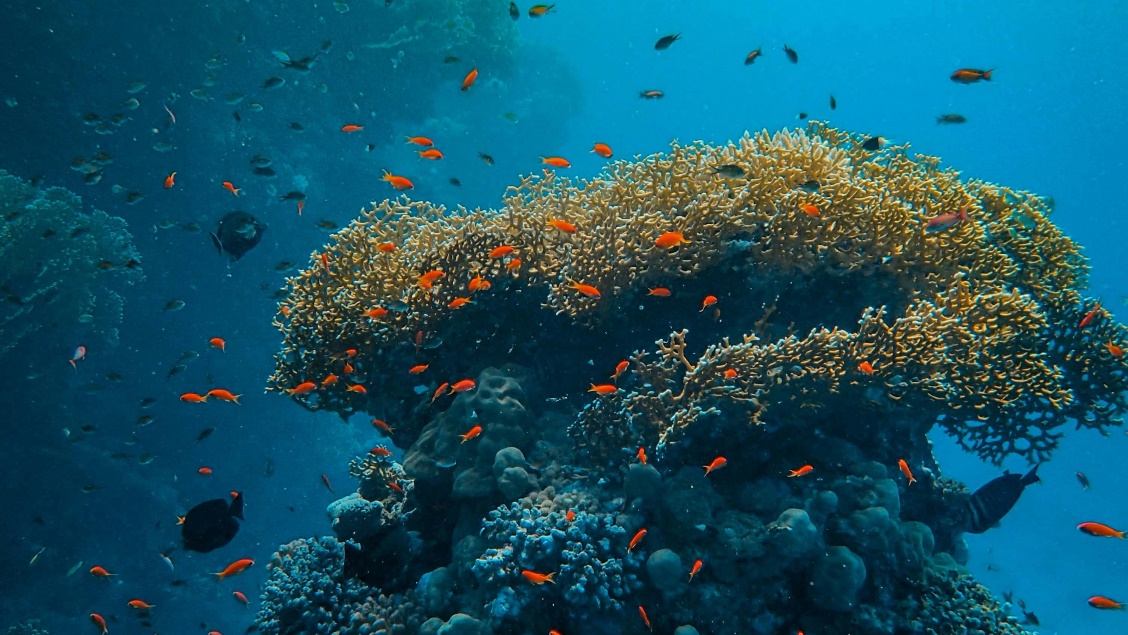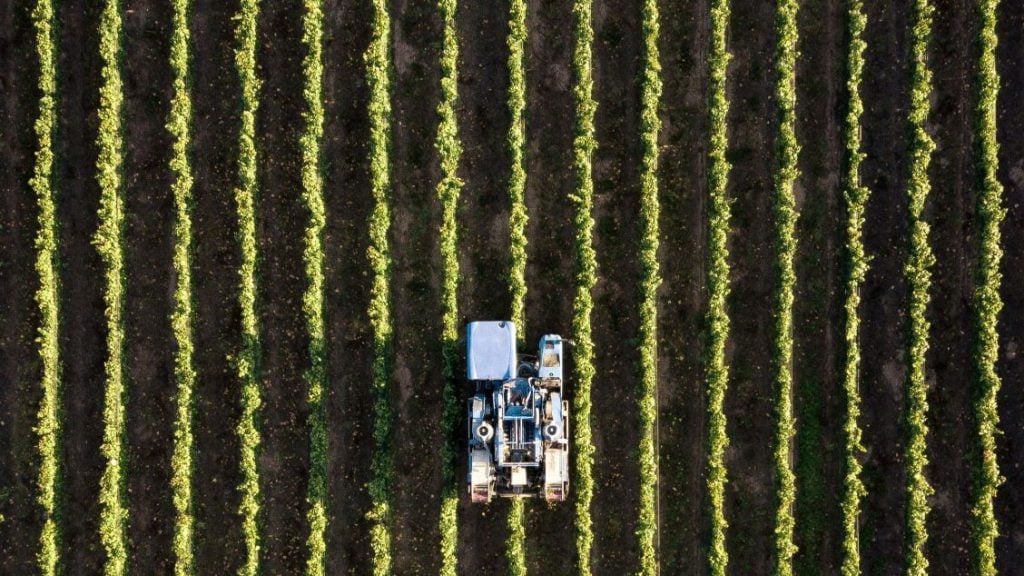
International Day for Biological Diversity
The 22nd of May marks the International Day of Biological Diversity. This year’s theme is ‘building back diversity’, cultivating a renewed sense of hope toward a brighter future for biodiversity and our environment.
Biodiversity is essential to sustaining life on this planet. In this article, we explore what biodiversity means and its importance for life on Earth. We discuss some of the reasons for biodiversity depletion, and what has been, and can be done, to help re-build these losses.
What is biological diversity?
Biological diversity, or biodiversity, concerns different types of living things and their interactions with one another. This encompasses the different types of animals, insects, plants, and even microorganisms living in the same environment. Furthermore, it includes the variations of the same type of organisms. Differences are narrowed down by genetic variations, creating unique species and making them different from each other. Biodiversity even encompasses the slight differences in genetics between members of the same species. These differences are what make each living organism different from the other, even those of the same species.
Why it’s important
Biodiversity is the foundation of life on earth. It is what makes up the different types of ecosystems seen in nature, e.g. rainforests, deserts, etc. Each of these places contains all the different types of living things that support one another in their ability to survive and grow.
A diverse variety of organisms is what makes up the food chain, creating a healthy, thriving ecosystem. For example, individual plants are dependent on different types of microorganisms, such as bacteria, to flourish and grow properly. In turn, varying insect species consume different plants for their survival.
One way humans benefit from biodiversity
For humans, biodiversity is a central pillar of modern civilization, determining the food we eat. It’s also the basis of modern medicine. It is estimated that 40% of modern medication is derived from nature and traditional knowledge of plants, herbs roots, and bark.
Building on this knowledge about plants over generations has led to advances in treating several types of diseases, including types of cancers. For example, the drugs called vinblastine and vincristine – alkaloids derived from Periwinkle plant – are now being used as anti-cancer agents to treat leukemia and non-Hodgkin lymphomas. Furthermore, different types of mushrooms have medicinal potential, exerting anti-inflammatory and anti-cancer effects, amongst many other medicinal properties. The benefits of using mushrooms in treatments for a range of diseases is still being investigated in clinical tests. To read more about the health benefits of mushrooms, click here.
Biodiversity is essential for an ecosystem to thrive
A harmonious balance between all living things is what makes biodiversity so crucial. Starting from the ground up, different species of bacteria and other microorganisms keep the soil in the ground of high quality. Meanwhile, there are plants maintaining air and water quality as part of their natural biological mechanisms.
Each diverse species of plant, animal, or microorganism contributes to their ecosystem in some way. It is fascinating to see how organisms live in a cyclical flow – leading to a give-and-take between their environment and other organisms present in their ecosystems.

It is exceptionally common for organisms to live in a state of symbiosis with one another. Symbiosis is a term used to describe a mutually beneficial relationship between two living organisms that interact with each other but are not alike. It is shown that symbiotic organisms are key players in maintaining biodiversity and regulating their local ecosystem dynamics. They have also been shown to be key in facilitating adaptations to changes in environments such as temperature rises.
As the importance of biodiversity is highlighted, its conservation becomes an ever-growing concern. In recent years, the diverse range of different animal and plant species has been quickly depleting. This is due to a few different reasons, including modern farming practices and climate change.
Loss of biodiversity
According to the United Nations, approximately 25% of animal and plant species are threatened and at risk of being extinct – some as little as within the next few decades.
Habitat destruction and climate change
There are a few reasons for the loss of biodiversity. The most obvious is the destruction of habitats resulting in the direct death of plants and animals, whether deliberately by humans, or non-deliberately by natural disasters. On both occasions, there is a major disruption to natural ecosystems. Extensive destruction of habitats puts many species at risk of being extinct. Deforestation, overpopulation, and urbanization by humans are a few examples of why habitat destruction occurs.
Pollution and climate change are also major contributing factors to the loss of biodiversity. This occurs in both land and water, with the significant loss of coral reefs being a prime example of the latter. Coral reefs are extremely sensitive to changes in temperature. Rising temperatures in the sea are one of the main reasons for coral reef bleaching and death.
Biodiversity and farming
The modern global food supply chain is the logistical, behind-the-scenes network ensuring the consistent supply of fresh food to our supermarkets and homes. Food production is one of the main reasons for the loss of biodiversity. Modern crop and plant breeding practices significantly deplete plant biodiversity and result in the genetic erosion of plants.
Industrial agriculture can be detrimental for biodiversity and involves mass farming of the same type of vegetation in specific areas. These species are usually crops bred from what was originally a diverse range of the same species type. However, plant breeders favoring things like aesthetics, flavor, and disease-resistant traits result in crops becoming significantly less genetically diverse. This occurrence is described as ‘genetic bottlenecks’. Hence, farmlands have become genetically simplified masses of undiverse vegetation as a result of this monoculture – or the plantation of one type of crop.
The impacts of farming practices are multifold. It starts with the initial destruction of natural environments to make way for farmlands. This reduces diversity of not only plants and animals but also of essential bacteria in the soil. Monocultures also reduce the different types of microbes present in the soil, creating many knock-on effects. This includes the manifestation of things like soil-borne disease and soil acidification, inevitably reducing crop yields in the long run.

There is no doubt that the loss of biodiversity has a significant effect on both humans and other animals and is a growing cause for concern. Biodiversity itself is difficult to quantify, with no singular metric currently used. Terms such as species richness, species abundance, or species threat, are often used to describe biodiversity. These factors are then utilized to guide government and corporate decision-making to reduce biodiversity loss.
Building back diversity
Although there has been significant destruction to our natural ecosystems in recent years, we look towards the future with the hope of rebuilding and replenishing.
Diversifying agriculture
As discussed, modern farming practices pose a serious threat to the biodiversity of an ecosystem. An editorial piece published by Ebert et al., in MDPI’s Plants explores the effects that these practices have and what can be done to help overcome these challenges. Among these include methods of conservation to reduce genetic erosion.
Plant breeders are urged to develop sufficient knowledge of and have access to technologies like gene panels and seed banks and to be educated on wild plants. Organizations like the Food and Agriculture Organisation (FOA) of the United Nations have created comprehensive guidelines on biodiversity in agriculture. Diversifying agriculture through practices such as crop rotation and multispecies cropping can help these environments to flourish, which also maintains the production of crops.
Coral reef restoration
The United Nations Environment Programme (UNEP) with the International Coral Reef Initiative release frequent reports monitoring coral reefs and current methods and policy for their protection and restoration. With around 50% of coral reefs already destroyed, it becomes a priority to ensure that we put in all our efforts to encourage its revival. The reports include guidelines and examples of restorations of practices to help key decision-makers make the right changes in policy to protect coral reefs. Examples of these practices include direct transplantation of coral fragments that are grown in nurseries into reefs. Another example includes establishing marine protected areas to preserve the coral reefs, ensuring that no further damage is done to these precious and biodiverse areas.
Biodiversity policy
Both the UNEP and FOA advise that changes need to be implemented through strict adherence to government policy. This highlights the role that the government plays in biodiversity conservation
The UN has established a set of seventeen sustainable development goals (SDGs), known as the 2030 Agenda for Sustainable Development. Goal fifteen expresses the aim of the preservation and conservation of ecosystems and their biodiversity. The goal is to:
‘protect, restore and promote sustainable use of terrestrial ecosystem, sustainably manage forests, combat desertification, and halt and reverse land degradation and halt biodiversity loss’
These very broad but crucial aims guide key corporate decision-making and government policy.
An example of this policy is the EU Biodiversity Strategy. This strategy instils strong aims such as the protection of land, a 10% maintenance of plant diversity, a reduction in the use of chemical pesticides, and a push towards organic farming practices.
Similarly, in 2014 the U.S Agency for International Development (USAID), established a Biodiversity Policy. The framework supports the ‘conservation of biodiversity for sustainable, resilient development,’ by holding visions and objects such as making the maintenance of biodiversity an essential part of human practice. In their policy, they discuss their involvement with international policy, and how this is ‘crucial to achieving and supporting the goals of USAID’s biodiversity policy’.
These frameworks and policies are key drivers to push for change in the way we approach the conservation of our environments and biodiversity. However, scientific research is the foundation of these policies, and the respective changes made.
Research is the foundation for change
Research on our ecosystems, biodiversity, and climate are all essential parts of rebuilding our environment. MDPI publishes open-access research on all aspects of ecology in a wide variety of journals, including journals like Diversity, Forests, Plants, Animals, and Oceans.
Open Access research is key to ensuring everyone can understand how important biodiversity is for life on Earth. It is also important for the dissemination of information to reach policymakers and others who make key decisions at a corporate level. On this note, we look towards the future with the hope of rebuilding more biodiverse ecosystems and creating a healthier and richer environment for all.










